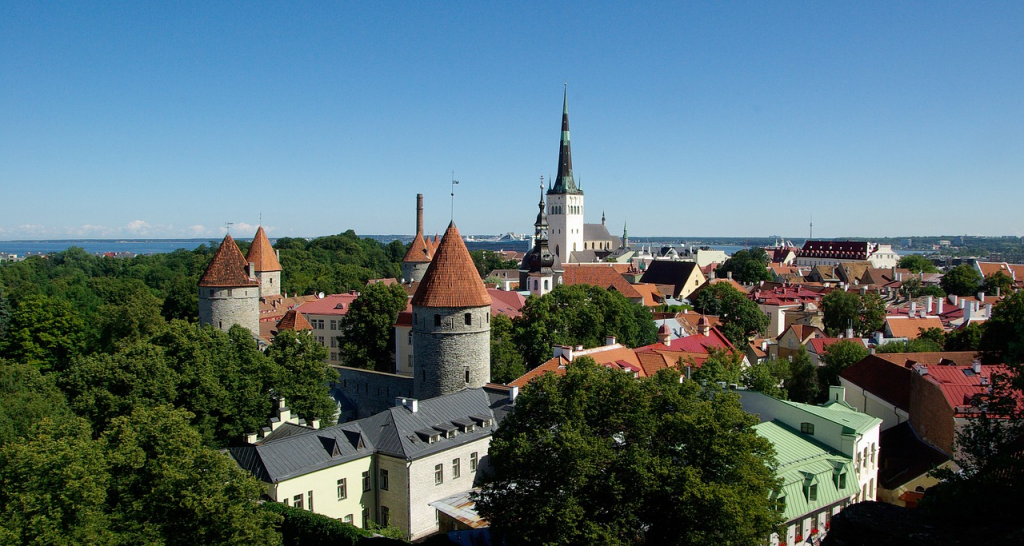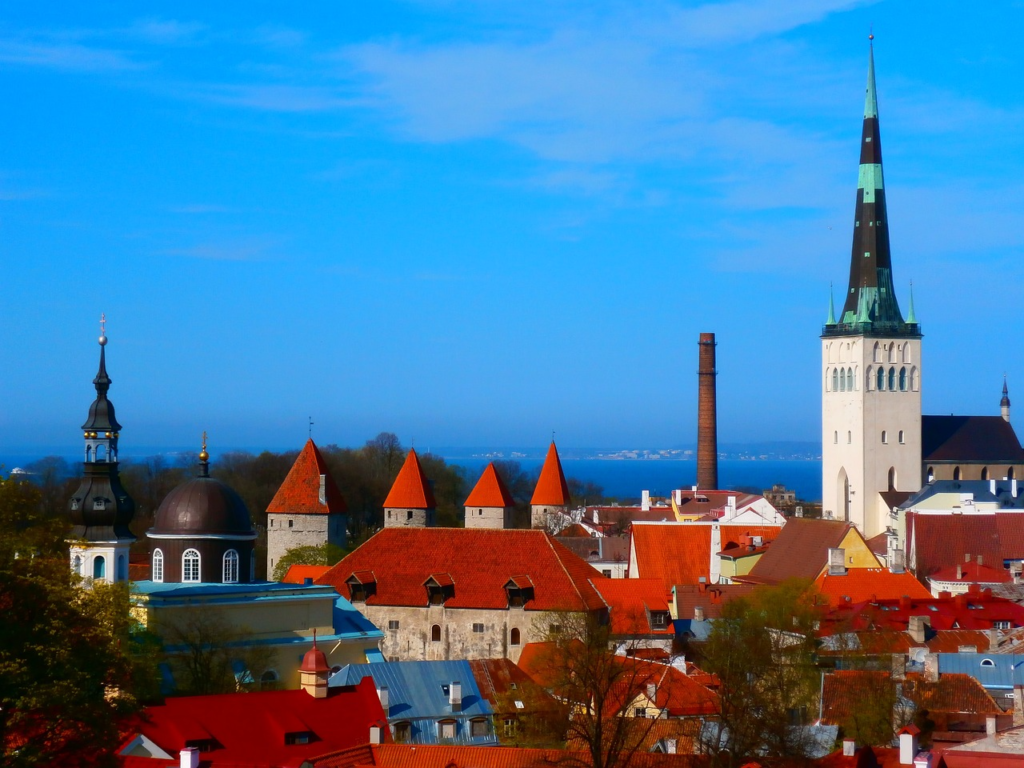I visited Tallinn as a feng shui consultant originally in 1995. I and a colleague were asked to evaluate the feng shui of Tallinn and Estonia and create a report on some major features that may affect the stability of Estonian independence and economic growth. Although the feng shui of Tallinn and Estonia needs constant re-evaluation, it has come a long way since its independence in 1990.
Tallinn is Estonia’s capital on the Baltic Sea, with a population of about half a million people. Key landmarks are the walled, cobblestoned old town, with many cafes and shops, as well as Kiek in de Kök, a 15th-century defensive tower. Gothic Town Hall, built in the 13th century and with a 64m-high tower, rests in historic Tallinn’s main square. Tallinn is the birthplace of Skype and the technological revolution that has been sweeping Estonia with its low tax and e-residency.
Feng shui of Tallinn
The onion-domed Alexander Nevsky Cathedral is an Estonian Orthodox church built in the 1890s by Russians and dates from past Estonia when it was a part of the Russian empire. It towers over the pale pink Estonian parliament building as a reminder of who was in charge here for the past 300 years.
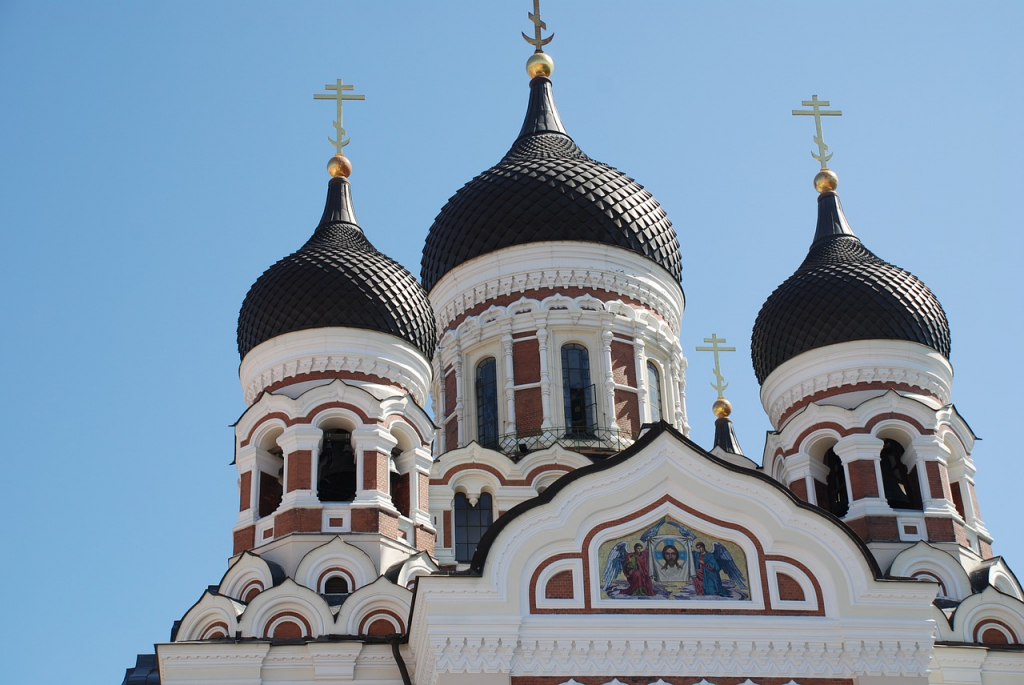
Feng shui of Alexander Nevsky Cathedral, Tallinn, Estonia
Tallinn overview
The best way to see the whole city is to go to the Tallinn TV tower’s viewing platform. The Danish King’s Garden, a vantage point, offers great views of the old town as well as Toompea Hill.
The Old Town
Tallinn is the home to the oldest town hall in Northern Europe, called ‘Red House’, built in 1404. Town Hall pharmacy was first recorded in 1422. Stroll through a deceptively quiet medieval old town in Tallinn, which is well known around Europe as the hub for technology by day and partying by night.
The Eye of the Needle is a gateway where if a condemned prisoner passed through this arch, they would escape execution and live a pious life happily ever after.
Chi of Tallinn
Since 2011, Estonians have been required by law to wear reflectors so they can be seen in the dark (the maximum fine is about £340), which makes the pedestrians walking sparkle, enhancing their own chi and the place.
Šoti Klubi (Scottish Club) garden (free entry) has a collection of important Scots, including Sean Connery (by Tiiu Kirsipuu) and Admiral Sir Edwyn Sinclair Alexander-Sinclair, who led the British navy ships in support of Estonian independence in 1918 and Robert Burns. This garden connects Estonia to Scotland and beyond.
Marzipan painting is a popular craft activity if you want to delve into the traditional cultural experience. Go to the oldest working cafe in Tallinn, Maiasmokk – meaning ‘person with a sweet tooth’, which tells you a bit about the key likes of an average Estonian. Christmas is a great time to get hold of painted marzipan, which can be eaten for up to four months.
Lennusadam (Seaplane Harbour), constructed as a national defence line for the Russian navy, is an interesting building with unsupported concrete domes (an engineering marvel at the time it was built).
If you need to experience more water elements of Tallinn, visit Kalam Saun – the public sauna in the Kalamaja district.
Kumu – the HQ of Estonia’s National Museum is an interesting, contemporary building with sharp cutting chi. Niguliste Museum (formerly Church of St Nicholas) is famous for the 15th-century Dance of Death artwork.
Feng shui of the Sokos Hotel Viru is interesting. The elevator doesn’t go to the top floor, which was reserved for many years as the K.G.B secret office to spy on people. They used very ingenious bugs in items such as ashtrays, bread plates and, of course, in all the rooms, sauna and on the phones.
Five Elements
Tallinn, the capital city of Estonia, presents a fascinating blend of historical richness, cultural vibrancy, and natural beauty, making it an intriguing place to explore through the lens of the Five Elements theory from Feng Shui—Wood, Fire, Earth, Metal, and Water. This theory, which emphasizes the balance and harmony among the elements in our environments, can offer unique insights into how the characteristics of Tallinn resonate with these universal energies.
Water Element in Tallinn
Water represents wisdom, fluidity, and connectivity. Tallinn’s location on the Gulf of Finland makes the Water element a central aspect of the city’s identity. The historic seaport, once a crucial part of the Hanseatic trade league, today serves as a gateway for exploration and exchange, embodying the flow and adaptability of Water. The presence of rivers and the sea integrates with the urban landscape, offering spaces for reflection and recreation, while the maritime museum and seaside promenades highlight the city’s long-standing relationship with the sea.
Wood Element in Tallinn
The Wood element symbolizes growth, vitality, and flexibility. In Tallinn, this element can be vividly seen in the city’s abundant green spaces, such as Kadriorg Park, a sprawling area of natural beauty ideal for rejuvenation and contemplation. The historical Tallinn Botanic Garden is another embodiment of the Wood element, showcasing a rich diversity of plant life that promotes a sense of growth and renewal. The wooden architecture of the Old Town, along with its cobblestone streets lined with trees, also reflects the influence of the wood element, blending history with the natural world.
Fire Element in Tallinn
Fire represents energy, transformation, and dynamism. This element can be experienced in Tallinn through its vibrant cultural scene and festivals. Events like the Tallinn Music Week and the Black Nights Film Festival (PÖFF) ignite the city’s creative spirit, showcasing innovation and bringing warmth and light to the colder months. The medieval torch-lit streets in the winter evenings and the lively café and restaurant scenes, where people gather to share stories and warmth, also reflect the Fire element’s presence in Tallinn.
Earth Element in Tallinn
The Earth element, symbolizing stability, nourishment, and care, is deeply rooted in Tallinn’s Old Town, a UNESCO World Heritage site. The well-preserved medieval buildings, from the Gothic churches to the sturdy walls and towers, convey a strong sense of grounding and connection to history. The use of natural materials, such as stone and brick, in its architecture and the cobblestone streets further enhance this element, offering a solid foundation that nurtures the city’s heritage and its people’s connection to its past.
Metal Element in Tallinn
Metal signifies clarity, logic, and efficiency. In Tallinn, this element is reflected in the city’s modern infrastructure and technology sector. As a leading city in digital innovation and home to numerous tech startups, Tallinn embodies the Metal element through its forward-thinking and innovative approach to technology and business. The sleek, modern architecture of the business district and the use of metal in contemporary art installations and public spaces also highlight this element’s influence, showcasing Tallinn’s commitment to progress and precision.
In conclusion, Tallinn, Estonia, through the framework of the Five Elements, reveals a harmonious blend of growth, energy, stability, innovation, and connectivity. This balance not only contributes to the city’s physical beauty and cultural richness but also enhances the well-being and vitality of its residents and visitors. By understanding and appreciating these elements in Tallinn, one can gain deeper insights into the essence of the city and the universal principles that foster harmony and balance in our environments.
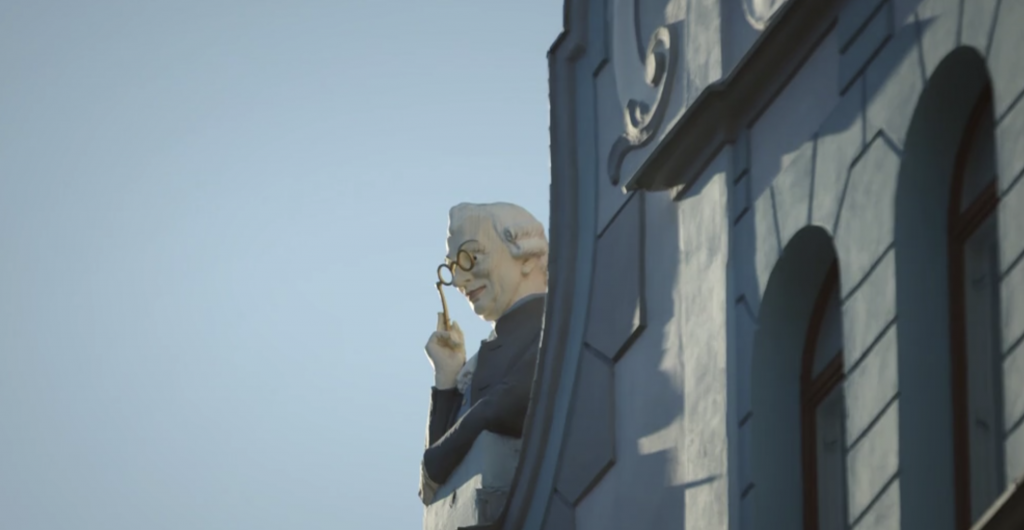
Peeping Tom in Tallinn
Peeping Tom in Tallinn
An interesting building at Pikk Street with a Peeping Tom bust on top of the building, put up by a Russian businessman to deter neighbours’ prowess eyes.
Spiritual Tallinn
Tallinn, the capital of Estonia, is a city where the spiritual tapestry is as rich and diverse as its history. Nestled on the shores of the Baltic Sea, Tallinn’s spiritual landscape is a fascinating blend of ancient traditions, medieval heritage, and a contemporary quest for personal spiritual paths. This combination creates a unique environment for the exploration and discovery of spiritual practices and beliefs.
Ancient and Pagan Traditions
Before the advent of Christianity, the region’s inhabitants practised a form of paganism that was deeply connected to the natural world. This ancient spirituality is still remembered and somewhat practiced today through celebrations of traditional festivals such as Jaanipäev, the summer solstice, which reflects the deep connection to nature and its cycles. The reverence for sacred groves, stones, and springs, though more subdued now, still touches on Estonia’s spiritual roots in nature worship and animism.
Medieval Christian Legacy
Tallinn’s Old Town, a UNESCO World Heritage site, is a testament to the city’s rich medieval past, including its spiritual heritage. The Alexander Nevsky Cathedral, an orthodox cathedral built in the Russian Revival style, and the St. Mary’s Cathedral (Dome Church), the oldest church in Tallinn, dating back to the 13th century, stand as significant landmarks. These architectural marvels are not only historical treasures but also active places of worship, embodying centuries of Christian faith and devotion.
Diverse Religious Landscape
Tallinn is home to a multitude of religious communities, reflecting the city’s cultural diversity. Besides the dominant Lutheran and Orthodox Christian communities, there are Catholic, Baptist, Jewish, Buddhist, and Islamic communities, each contributing to the spiritual mosaic of the city. The Tallinn Synagogue, which opened in 2007, and the Kuninga Mosque cater to the spiritual needs of the Jewish and Muslim populations, offering spaces for worship and community gathering, respectively.
Contemporary Spiritual Movements
In recent years, there has been a growing interest in alternative spiritualities and new religious movements in Tallinn. This includes everything from New Age practices, such as meditation and yoga and feng shui, to more structured movements like Buddhism and various esoteric teachings. These practices reflect a search for personal spiritual fulfilment and a desire to connect with universal truths beyond traditional religious doctrines.
Festivals and Cultural Events
Tallinn hosts various festivals and events that have a spiritual or philosophical dimension, such as the Tallinn Yoga Festival and the Mystical Estonia event, which explore the spiritual traditions and practices of Estonia and beyond. These gatherings are opportunities for spiritual seekers to come together, share experiences, and learn from each other, fostering a sense of community and mutual understanding.
Spiritual Tourism
The city’s historical and spiritual landmarks, along with its serene natural surroundings, make Tallinn a destination for spiritual tourism. Visitors are drawn to the Old Town’s cobblestone streets and historic churches, the peaceful parks, and the seashore for moments of reflection and connection. The Kadriorg Park, with its beautiful gardens and the tranquil Swan Lake, offers a perfect setting for contemplation and nature-based spirituality.
In conclusion, Tallinn’s spiritual landscape is as multifaceted and intriguing as its history and culture. From its pagan roots to the diverse expressions of faith and spirituality found today, the city offers a rich tapestry of spiritual exploration and experience. Whether one is drawn to the solemnity of ancient churches, the wisdom of alternative spiritual practices, or the simple beauty of nature, Tallinn provides a unique backdrop for the spiritual journey.
Tallinn – the Silicon Valley of Northern Europe
Skype, TransferWise, and Bolt (formerly Taxify) are success stories of the start-up set. Visit Telliskivi Creative City, which is a complex of recycled warehouses in the Kalamaja district, to see where technology is heading.
How did I end up doing feng shui for Tallinn?
A friend of mine, Jasmine, who lives in Tallinn, mailed me a postcard of Tallinn, and just for fun and with a very weak intention, I placed it in the travel corner of my office (to follow the feng shui formula of intention + ritual), and three months later, I was asked to do feng shui for Tallinn.
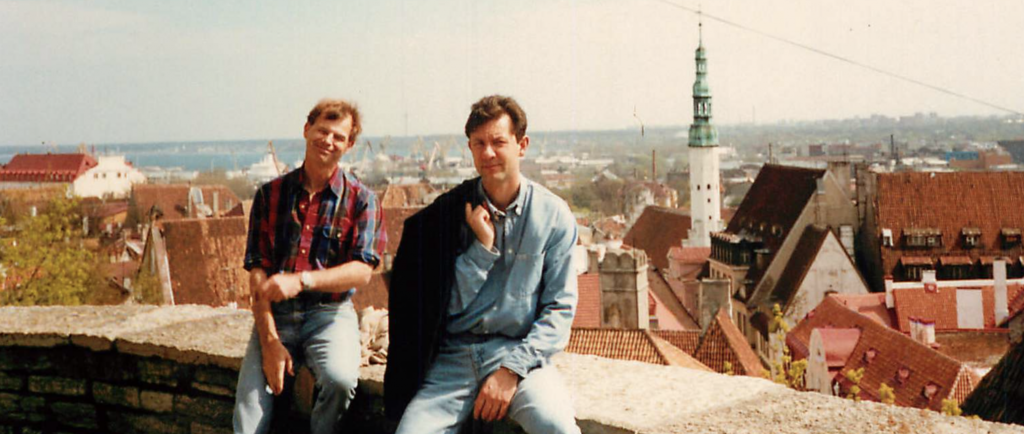
Graham Gunn & Jan Cisek Feng Shui Consultants in Tallinn, Estonia in 1995
Estonia in winter
If you want to check the energy of Estonia during winter time and you fancy kick sledging, go to Lake Maardu to try it out.
Feng shui consultants in Tallinn, Estonia
A Google search revealed that there are not many feng shui consultants in Tallinn, Estonia. So, if you live in Tallinn or anywhere in Estonia and are looking for a feng shui consultant, feel free to call/text/Whatsapp me at +44 7956 288574 for a quote for a feng shui consultation for your home or workplace. I’d be happy to travel to Estonia or to do a remote feng shui consultation via Skype, which was born in Tallinn, or FaceTime or WhatsApp. Email me

